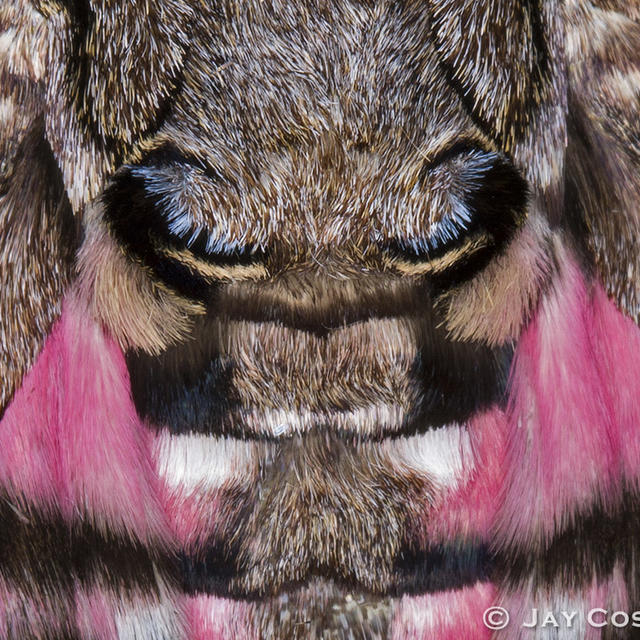Pink-spotted hawkmoth
Agrius cingulata (Fabricius, 1775)
Family: Sphingidae
Subfamily: Sphinginae
Identification: Body is robust. Abdomen tapers to a point and is grayish brown with pink bands. Forewing is mottled gray and brown; hindwing is gray with black bands and pink at the base.
Wing Span: 3 3/4 - 4 3/4 inches (9.5 - 12 cm).
Life History: Caterpillars are large and stout and have a horn at the end of the abdomen. They feed both day and night. Caterpillars pupate in chambers dug in the ground. Adults are very strong fliers.
Flight: . One flight from June-October in most of the range, several flights throughout the year in Florida and Louisiana.
Caterpillar Hosts: Sweet potato (Ipomoea batatas), jimsonweed (Datura), and related plants.
Adult Food: Nectar from deep-throated flowers including moonflower (Calonyction aculeatum), morning glory (Convolvulus), and petunia (Petunia species).
Habitat: Tropical and subtropical lowlands, open areas.
Range: Argentina north through Central America, Mexico, and the Caribbean to the southeastern United States, Texas, southern New Mexico, Arizona, and southern California; strays northward in the summer to British Columbia, Colorado, Michigan, and Maine.
Conservation: Not usually required.
NCGR: G5 - Demonstrably secure globally, though it may be quite rare in parts of its range, especially at the periphery.
Management Needs: The caterpillars can be pests on sweet potatoes in the southern states.
Alternate Scientific Names:
Agrius cingulatus
Please donate!
We depend on donations to keep Butterflies and Moths of North America freely available. We want to express our gratitude to all who showed their support by making a contribution this year. You can donate to support this project at any time.
Advertise with us!
Do you have a product or service that you think would interest BAMONA users? If you would like to advertise on this website, contact us by email, or use the contact form and select the "Advertising" category.
Verified Sightings
Displaying 1 - 24 of 552 verified sightings

Observation date: Jul 22, 2025
Submitted by: J_Martineau
Region: Pima County, Arizona, United States
Verified by: J_Martineau
Verified date: Dec 14, 2025

Observation date: Oct 07, 2025
Submitted by: Mollz211
Region: Hamilton County, Ohio, United States
Verified by: rogerdowner
Verified date: Oct 09, 2025

Observation date: Sep 24, 2025
Submitted by: Rclements7051
Region: Richmond County, Georgia, United States
Verified by: Mikelchap
Verified date: Sep 29, 2025

Observation date: Sep 13, 2025
Submitted by: Moebus6
Region: Norfolk County, Massachusetts, United States
Verified by: rogerdowner
Verified date: Sep 14, 2025

Observation date: Apr 11, 2025
Submitted by: Keopiis
Region: Harrison County, Mississippi, United States
Verified by: stomlins701
Verified date: Sep 10, 2025

Observation date: Jun 29, 2025
Submitted by: jdors_
Region: Texas, Mason County, United States
Verified by: stomlins701
Verified date: Sep 10, 2025

Observation date: Jun 28, 2025
Submitted by: WhoDatNana
Region: Lafourche Parish, Louisiana, United States
Verified by: stomlins701
Verified date: Sep 10, 2025

Observation date: Jun 12, 2025
Submitted by: GoDawgs
Region: Richmond County, Georgia, United States
Verified by: Mikelchap
Verified date: Jul 20, 2025

Observation date: Sep 11, 2024
Submitted by: trinleann
Region: Brazos County, Texas, United States
Verified by: stomlins701
Verified date: Jan 24, 2025

Observation date: Sep 10, 2024
Submitted by: Sheilabean
Region: Texas, Tarrant County, United States
Verified by: stomlins701
Verified date: Jan 24, 2025

Observation date: Oct 04, 2024
Submitted by: hsmarshall
Region: Humphreys County, Mississippi, United States
Verified by: stomlins701
Verified date: Jan 24, 2025

Observation date: Aug 03, 2024
Submitted by: KristinGabel
Region: Carson County, Texas, United States
Verified by: stomlins701
Verified date: Sep 05, 2024

Observation date: Jun 20, 2024
Submitted by: Akamai Ilio
Region: Kauai County, Hawaii, United States
Verified by: jwileyrains
Verified date: Jun 23, 2024

Observation date: Oct 13, 2023
Submitted by: Lesaffell
Region: St. Louis County, Missouri, United States
Verified by: jwileyrains
Verified date: Apr 15, 2024

Observation date: Dec 20, 2023
Submitted by: Animal Whisperer
Region: Miami-Dade County, Florida, United States
Verified by: curtis.lehman
Verified date: Dec 20, 2023
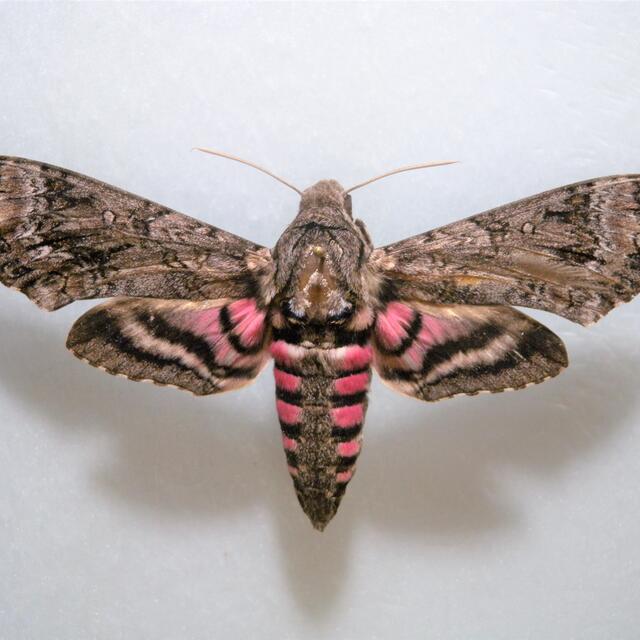
Observation date: Jun 16, 2023
Submitted by: J_Martineau
Region: Santa Cruz County, Arizona, United States
Verified by: J_Martineau
Verified date: Nov 02, 2023
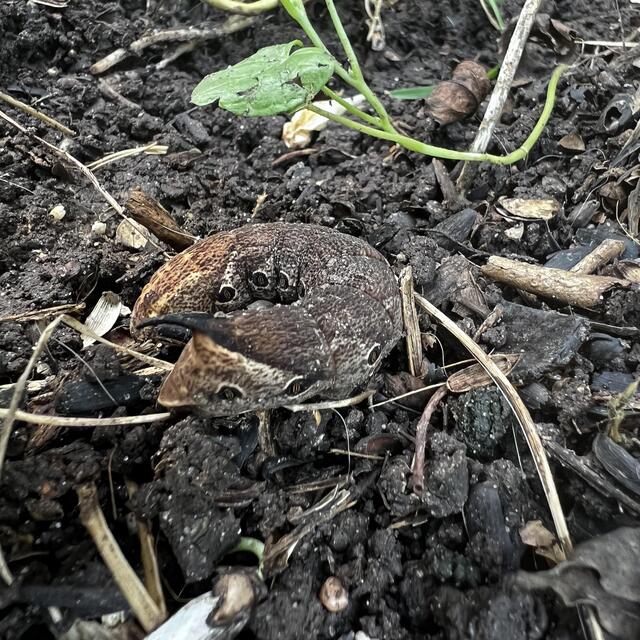
Observation date: Oct 28, 2023
Submitted by: Sms3ty2ta1
Region: Fort Bend County, Texas, United States
Verified by: stomlins701
Verified date: Oct 30, 2023

Observation date: Oct 23, 2023
Submitted by: JamieLynn
Region: Aiken County, South Carolina, United States
Verified by: Dennis Forsythe
Verified date: Oct 23, 2023
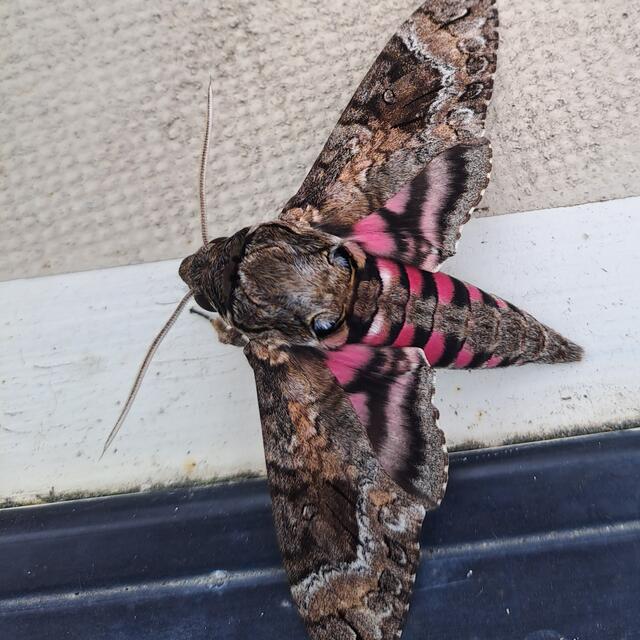
Observation date: Oct 11, 2023
Submitted by: AlexandraRae
Region: New Hanover County, North Carolina, United States
Verified by: rogerdowner
Verified date: Oct 13, 2023

Observation date: Oct 12, 2023
Submitted by: Blatta
Region: Ontario, Canada
Verified by: curtis.lehman
Verified date: Oct 12, 2023

Observation date: Oct 01, 2023
Submitted by: Mikelchap
Region: Glynn County, Georgia, United States
Verified by: Mikelchap
Verified date: Oct 04, 2023

Observation date: Oct 01, 2023
Submitted by: Stef.trot
Region: Quebec, Canada
Verified by: Sue Gregoire
Verified date: Oct 02, 2023
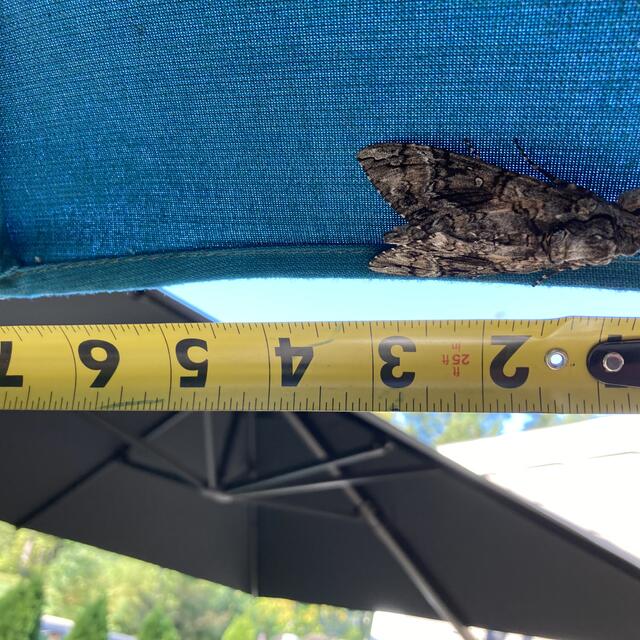
Observation date: Oct 01, 2023
Submitted by: Marigold Z
Region: Lebanon County, Pennsylvania, United States
Verified by: curtis.lehman
Verified date: Oct 01, 2023

Observation date: Aug 31, 2023
Submitted by: Blue Swallowtail
Region: Adams County, Nebraska, United States
Verified by: J_Martineau
Verified date: Sep 05, 2023
- 1 of 23
- next ›




